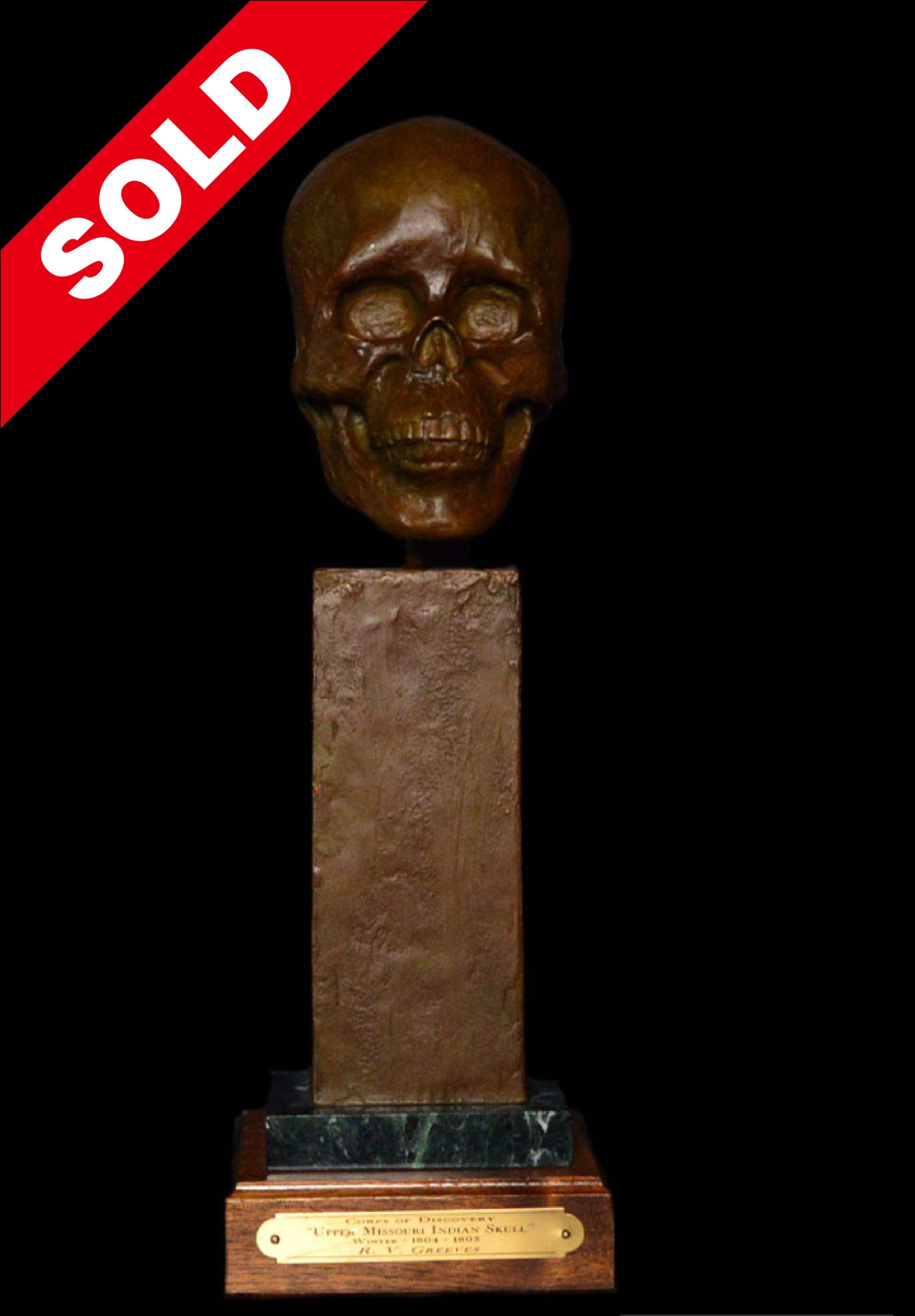SOLD!
Richard Vernon Greeves
Contemporary

“Walla Walla Man – October 1805” by Richard Vernon Greeves is a haunting and deliberate sculpture—part memorial, part monument—confronting the viewer with the inescapable reality of mortality and erasure. A human skull rests atop a column etched with profile imagery, symbols, and text, transforming this piece from anatomical study to cultural commentary.
The date references the Lewis and Clark expedition’s documented meeting with the Walla Walla tribe. But Greeves, rather than celebrate the encounter, distills its consequences—what was recorded, what was taken, and what remains. This is not a tribute to contact. It’s a testimony to what’s been buried.
The pedestal beneath the skull is inscribed with a carved profile of a Native man—head held high, adorned in traditional regalia—beneath which are engraved words that echo loss, resistance, and memory. It's a visual eulogy: elegant, unflinching, and impossible to ignore.
“Walla Walla Man” stands as one of Greeves’s most stark works—a reminder that history isn’t just what survives, but what’s been silenced. A poignant addition to any collection focused on Indigenous narrative, historical confrontation, or bronze sculpture that doesn’t blink.